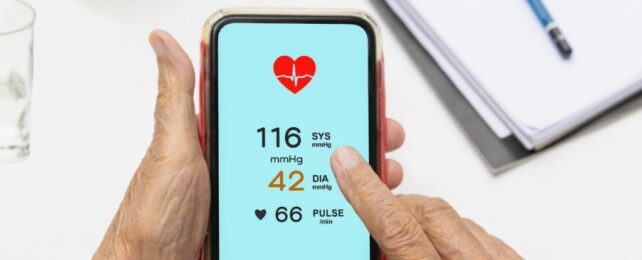Technology has revolutionized nearly every aspect of our lives, including how we monitor our health. For tech enthusiasts and health-conscious individuals alike, the question often arises: Can you measure blood pressure on your phone? With the growing interest in mobile applications promising to track your blood pressure using only a smartphone, it’s time to explore this innovation in detail.
This article will cover how these apps work, their accuracy compared to traditional methods, and considerations for safely using them.
The Rise of Smartphone Blood Pressure Apps
The demand for convenient health-monitoring tools has driven several app developers to introduce platforms that claim to offer blood pressure readings via your smartphone. These apps often integrate into larger mobile health ecosystems, providing users with real-time health metrics. Companies like Binah.ai, for instance, have unveiled tools that promise to measure blood pressure using just a camera and sophisticated algorithms.
How Do These Apps Work?
Most smartphone-based blood pressure apps use a technology called Photoplethysmography (PPG). This technique involves analyzing light reflected off your skin to detect blood flow patterns and calculate specific health parameters. Here’s a simplified overview of how it works:
- Camera as a Sensor: The phone camera captures minute changes in skin color caused by blood flow under the skin.
- Data Processing: The app’s AI analyzes this input data to estimate blood pressure levels.
- No Physical Cuff: Unlike traditional methods, these apps eliminate the need for inflatable cuffs, relying entirely on visual and algorithmic data.
Are These Apps Accurate?
While using your phone to measure blood pressure sounds convenient, its accuracy remains a topic of debate. According to Dr. Jordana Cohen, assistant professor of medicine at the University of Pennsylvania, such technology is still in early development. Many apps lack sufficient clinical validation and do not provide the same reliability as a conventional cuff-based device.
Some challenges that impact the accuracy of these tools include:
- Calibration Issues: Traditional cuffless methods often require baseline data for accuracy. Many phone-based apps skip this step.
- Environmental Factors: Lighting, skin tone, facial hair, and makeup can all potentially interfere with data collection.
- Biased Algorithms: Without diverse testing across various skin tones and user demographics, AI-based tools risk producing biased or inconsistent results.
For example, Binah.ai claims its technology meets international standards for low-accuracy blood pressure devices. However, experts caution that such standards are designed for cuffed devices, not AI-driven apps. Therefore, relying on these tools for clinical decisions is currently not recommended.
Expert Opinions on Measuring Blood Pressure with Your Phone
Medical professionals have mixed feelings about mobile blood pressure apps. While they praise the innovation and accessibility of these tools, they emphasize that clinical-grade devices remain the gold standard. Dr. Ann Marie Navar, a cardiologist at the University of Texas Southwestern Medical Center, highlights that more published research is needed to validate these apps.
Experts also emphasize the importance of understanding human factors. For example, the ideal body positioning for facial measurements (used by some apps) is not yet well-established.
How to Use Blood Pressure Apps Properly
If you decide to try a smartphone blood pressure app, here are some tips to ensure the best possible accuracy:
- Follow App Instructions Carefully: Position your face or finger as directed by the app, ensuring proper lighting and minimal distractions.
- Use as an Indicator Only: These apps should complement, not replace, traditional monitoring devices.
- Cross-Verify Readings: Periodically compare app results with a medical-grade blood pressure monitor to evaluate accuracy.
Privacy and Data Security Considerations
Before downloading a blood pressure app, you should carefully review its privacy policy. These applications rely heavily on sensitive data, making robust encryption and secure storage essential.
Key questions to ask:
- Does the app comply with regulations like HIPAA?
- Are your data encrypted during storage and transmission?
- Does it share your health metrics with third parties?
Choose apps from reputable developers with a clear commitment to data security.
FDA Regulations for Blood Pressure Apps
It’s worth noting that many of these apps are currently not FDA-approved for medical use. Instead, they are marketed as wellness devices, which means they cannot claim to provide clinically actionable insights. If you’re considering using such tools, ensure they are clearly marked as FDA-approved or consult your healthcare provider for guidance.
Alternatives for Accurate Blood Pressure Monitoring
If you’re looking for reliable and medically approved methods to measure blood pressure, here are a few alternatives:
- Traditional Cuff Monitors: Devices like Omron and Withings offer FDA-approved monitors with high accuracy levels.
- Wearables: Smartwatches such as those offered by Samsung and Fitbit include blood pressure tracking features, though accuracy varies.
- Clinical Visits: Regular check-ups with a healthcare provider ensure precise monitoring.
Final Verdict on Smartphone Blood Pressure Measurement
The ability to measure blood pressure on your phone is an exciting prospect, but the technology is still in its infancy. While current apps provide a glimpse into the future of health monitoring, their accuracy and reliability aren’t yet sufficient for clinical decision-making. For now, they’re best used as supplementary tools alongside traditional devices.
Stay informed, stay healthy. For the latest updates on advanced health tech, bookmark our page and follow our tips.








